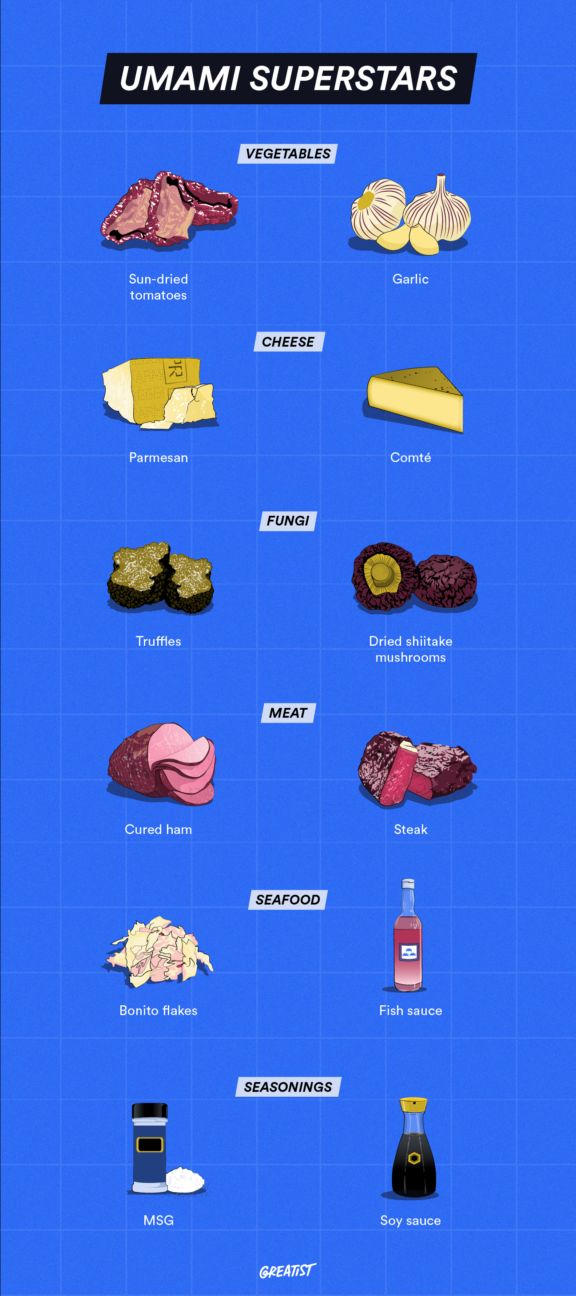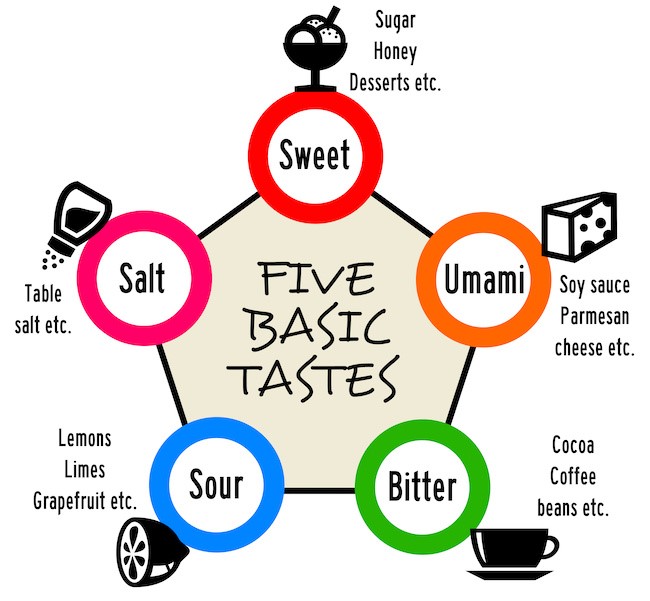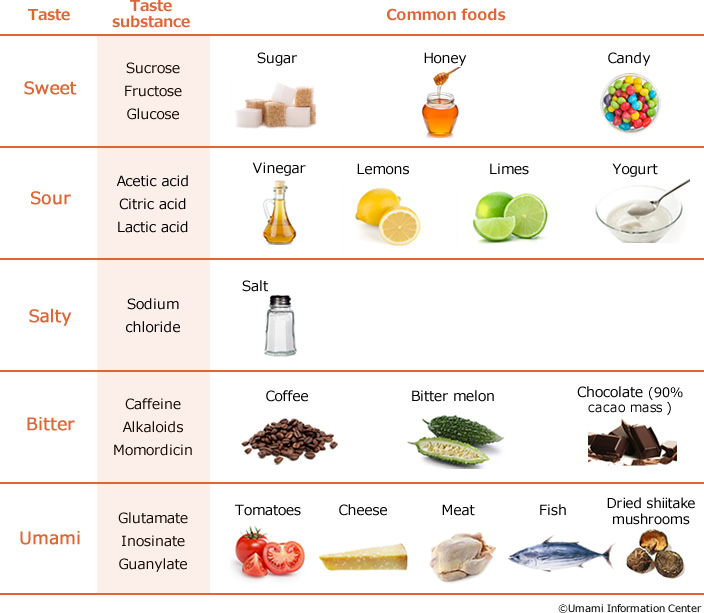Unveil the secrets of umami in our comprehensive flavor guide and elevate your culinary skills to the next level.
Table of Contents
- Introduction to Umami: The Mysterious Fifth Taste
- Exploring Umami: Foods That Pack the Flavor
- The Science of Umami: Why Do We Love It?
- Combining Flavors: Balancing Umami with Other Tastes
- Creating Your Own Umami-Rich Dishes at Home
- Cooking Tips: Mastering Umami in Your Kitchen
- Kid-Friendly Umami Dishes
- Umami All-Around: Finding Umami in Unexpected Places
- The Future of Umami: Innovations in Flavor
- Bringing It All Together: Your Guide to Mastering Umami
- FAQs: Curious Questions About Umami Answered
Introduction to Umami: The Mysterious Fifth Taste
In this opening, we will introduce the concept of umami as one of the five basic tastes and explain why it’s important in food enjoyment.
What is Umami?
Umami is a unique taste that is often described as savory, meaty, and delicious. It is one of the five basic tastes, alongside sweet, sour, bitter, and salty. Umami adds depth and complexity to the flavors of food.
Imagine a world of flavors where every dish has an extra layer of deliciousness – that’s the magic of umami. It’s like a secret ingredient that makes everything taste better!
History of Umami Discovery
Umami wasn’t officially recognized as a taste until relatively recently. In 1908, a Japanese scientist named Kikunae Ikeda identified umami as a distinct taste that could not be categorized as sweet, sour, bitter, or salty. Since then, umami has been celebrated in the culinary world for its ability to enhance dishes and create unforgettable flavors.
Exploring Umami: Foods That Pack the Flavor
In this section, we will delve into the delicious world of umami and explore various foods that are known for their rich and savory flavors. Umami plays a crucial role in creating mouth-watering dishes, and understanding its presence in different ingredients can elevate any culinary adventure.
Common Umami-rich Foods
Umami can be found in a wide range of foods, adding depth and complexity to dishes. Some common umami-rich ingredients include:
- Tomatoes
- Cheese, especially Parmesan
- Mushrooms
- Soy sauce
- Seaweed, like nori
These ingredients are staples in many cuisines around the world and are loved for their ability to enhance the flavor of dishes with their umami profile.
Global Umami Treats
Umami transcends cultural boundaries, and different cuisines have unique ways of incorporating this savory taste. Here are some examples of global umami treats:
- Japanese miso soup, made with fermented soybean paste, is a classic umami-packed dish.
- Italian pasta dishes often feature Parmesan cheese, adding a rich umami flavor to the meal.
- Korean kimchi, a spicy fermented cabbage, is known for its umami-rich taste.
Exploring these global umami treats can open up a world of flavors and inspire you to create innovative dishes that showcase the depth and richness of this fifth taste.
The Science of Umami: Why Do We Love It?
In this section, we will explore the fascinating science behind umami and why it is so beloved by taste buds all around the world.

Image courtesy of greatist.com via Google Images
Umami and Our Taste Receptors
Umami, often described as a savory or rich taste, is detected by special receptors on our tongues. These receptors are specifically sensitive to the amino acid glutamate, which is abundant in umami-rich foods like tomatoes, mushrooms, and cheese. When we eat foods with umami, these receptors send signals to our brain that trigger feelings of satisfaction and enjoyment.
The Umami Boost: Satisfying Our Cravings
Have you ever noticed how certain foods leave you feeling more satisfied than others? That’s where umami comes in! Umami has the unique ability to enhance the overall flavor of a dish, making it more enjoyable and fulfilling. By adding umami-rich ingredients like soy sauce, miso, or Parmesan cheese to your meals, you can elevate the taste and make them even more delicious.
Combining Flavors: Balancing Umami with Other Tastes
When it comes to creating delicious dishes, combining umami with salty flavors can elevate the taste to a whole new level. Think about how a sprinkle of soy sauce can deepen the savory notes of a rich broth or how a dash of Parmesan cheese can enhance the umami profile of pasta dishes.
Sweet and Umami: A Contrast in Tastes
While sweet and umami may seem like polar opposites, they can actually work harmoniously together in recipes. Consider how a touch of honey can balance the umami richness of a soy-glazed salmon or how caramelized onions can add a subtle sweetness to a mushroom risotto, enhancing the overall flavor profile.
Creating Your Own Umami-Rich Dishes at Home
In this section, we will guide you in starting your own culinary adventure by creating dishes rich in umami. Let’s explore how you can bring the delicious umami flavor into your homemade meals.

Image courtesy of www.japanlivingguide.com via Google Images
Stocking the Umami Pantry
Having the right ingredients is key to creating umami-rich dishes at home. Make sure your pantry is stocked with essential items that bring out the savory goodness in your cooking:
– Soy sauce: A classic umami powerhouse that adds depth to stir-fries and marinades.
– Miso paste: Perfect for making savory soups and dressings with a rich umami taste.
– Tomato paste: Enhances the umami flavor in sauces, stews, and casseroles.
– Parmesan cheese: Adds a nutty, salty flavor that boosts the umami profile of pasta dishes and risottos.
– Mushrooms: Whether fresh or dried, mushrooms are a great source of natural umami that can elevate any dish.
Simple Tips for Adding Umami Flavor
Now that you have your umami ingredients ready, here are some practical tips for incorporating that irresistible flavor into your everyday cooking:
– Sear your meats: Browning meat creates a rich umami taste through the Maillard reaction.
– Roast your vegetables: Oven-roasting vegetables intensifies their natural flavors, including umami.
– Use umami-rich condiments: Add a dash of fish sauce, Worcestershire sauce, or miso to enhance the umami depth of your dishes.
– Experiment with different cooking techniques: Try caramelizing onions, deglazing pans with wine, or slow cooking to develop complex umami flavors.
– Balance your flavors: Remember to combine umami with other tastes like sweet, sour, salty, and bitter for a well-rounded dish.
Cooking Tips: Mastering Umami in Your Kitchen
Umami is a magical taste that can elevate the flavors of your dishes to a whole new level. Here are some cooking tips to help you enhance umami in your homemade meals, making even simple recipes taste complex and delicious.
| Flavor | Taste Description | Examples |
|---|---|---|
| Sweet | Pleasant and sugary taste | Honey, fruits, sugar |
| Sour | Tangy and acidic taste | Lemons, vinegar, yogurt |
| Salty | Mineral and savory taste | Sea salt, soy sauce, olives |
| Bitter | Sharp and astringent taste | Coffee, dark chocolate, kale |
| Umami | Rich and savory taste | Tomatoes, mushrooms, soy sauce |
Techniques to Boost Umami
One effective way to boost umami in your dishes is through slow cooking. When you cook ingredients slowly over a low heat, their flavors intensify, bringing out their natural umami richness. Another technique is roasting – this method caramelizes the sugars in food, creating a depth of flavor that enhances the umami taste.
Avoiding Common Mistakes
When trying to add umami flavor to your dishes, it’s important to avoid some common mistakes. One common error is using too much soy sauce or other salty condiments, which can overpower the dish with saltiness. Instead, try to balance the umami with other tastes like sweetness or acidity for a well-rounded flavor profile.
Kid-Friendly Umami Dishes
Hey there, young foodies! Are you looking for some delicious umami-packed snacks to enjoy during your school breaks? Look no further! Here are some simple and tasty snack ideas that are easy to make and will satisfy your taste buds:

Image courtesy of www.umamiinfo.com via Google Images
Popcorn with Parmesan Cheese: Sprinkle some grated Parmesan cheese over your popcorn for a cheesy and savory umami twist. It’s the perfect snack to munch on while studying or hanging out with friends.
Edamame Beans: These bright green soybeans are not just fun to eat, but also full of umami flavor. Boil them in salted water, let them cool, and then pop them out of the pods for a tasty and healthy snack.
Seaweed Chips: Crispy, crunchy, and packed with umami from the sea, seaweed chips are a great alternative to regular potato chips. You can find them at most grocery stores or make your own at home for a unique and flavorful treat.
Family Meal Ideas with Umami
Want to get the whole family involved in cooking while exploring umami flavors together? Check out these family-friendly recipes that incorporate umami into familiar dishes:
Homemade Pizza with Mushrooms: Create your own pizza at home and top it with umami-rich mushrooms. The earthy flavor of mushrooms pairs perfectly with gooey cheese and tomato sauce for a mouth-watering meal that the whole family will love.
Soy-Glazed Salmon with Rice: This simple and tasty dish combines tender salmon fillets with a sweet and salty soy glaze that enhances the natural umami of the fish. Serve it over fluffy white rice for a complete and satisfying meal.
Umami Burger Sliders: Get creative by making mini umami burgers using ground beef seasoned with soy sauce and garlic. Top them with melted cheese and caramelized onions for a flavor-packed slider that’s perfect for a family cookout or dinner party.
Umami All-Around: Finding Umami in Unexpected Places
Umami is not just limited to the traditional sources we find in our kitchens. This mysterious fifth taste can also be discovered in some unexpected places, adding depth and richness to dishes in ways you might not have imagined.
Umami Outside the Kitchen
Believe it or not, umami can be found in more than just the foods we eat. Did you know that some types of seaweed contain high levels of umami? That’s right! So, next time you’re at the beach, take a closer look at those seaweed varieties and appreciate their natural umami flavor.
Another surprising source of umami is mushrooms. These earthy fungi offer a unique savory taste that can enhance the umami profile of any dish. Whether they’re mixed into a stir-fry or blended into a soup, mushrooms bring a rich umami essence that you won’t want to miss.
Fun Facts About Natural Umami
Here’s a fun tidbit for you: Did you know that aged cheeses, like Parmesan and aged cheddar, are packed with umami goodness? The aging process of these cheeses intensifies their umami flavors, making them a delicious addition to any meal.
Additionally, tomatoes are also a surprising source of natural umami. Whether in the form of fresh tomatoes, tomato paste, or sun-dried tomatoes, these red gems offer a burst of savory goodness that enhances the overall taste of a dish.
The Future of Umami: Innovations in Flavor
As we delve into the exciting realm of umami, we cannot help but ponder what the future holds for this remarkable taste sensation. Chefs and culinary enthusiasts worldwide are constantly pushing the boundaries of flavor, seeking innovative ways to incorporate umami into their creations and elevate the dining experience to new heights. Let’s explore the cutting-edge innovations in umami-rich dishes and the culinary adventures that lie ahead.

Image courtesy of www.teafolly.com via Google Images
Innovative Chefs and Umami
Across the globe, visionary chefs are experimenting with umami in unprecedented ways, revolutionizing the way we perceive and enjoy this savory taste. From molecular gastronomy to fusion cuisine, these bold culinary pioneers are combining traditional umami-rich ingredients with modern techniques to create dishes that dazzle the palate and ignite the senses.
Some chefs are infusing umami into unexpected dishes, such as desserts and cocktails, challenging conventional norms and expanding the possibilities of flavor pairing. By embracing umami as a versatile and essential element in their culinary repertoire, these innovators are shaping the future of gastronomy and paving the way for a new era of taste exploration.
Can You Overdo Umami?
While umami adds depth and complexity to dishes, it is essential to strike a balance when incorporating this rich taste. Just like any other flavor, too much umami can overpower the other elements in a dish, leading to an unpleasant dining experience. Chefs must exercise restraint and finesse when utilizing umami to ensure that it enhances rather than overwhelms the overall flavor profile.
By understanding the nuances of umami and its interaction with other taste components, chefs can create harmonious and well-rounded dishes that showcase the full potential of this elusive fifth taste. As we navigate the future of umami-infused cuisine, finding the perfect equilibrium of flavors will remain a cornerstone of culinary innovation and creativity.
Bringing It All Together: Your Guide to Mastering Umami
As we journeyed through the world of flavors and delved into the realm of umami, we discovered the secrets of this mysterious fifth taste that adds depth and richness to our meals. Now, let’s bring it all together into a handy guide for you to master the art of umami in your culinary creations with easy-to-follow recipes.
What is Umami?
Umami is a savory taste that brings a unique flavor profile to dishes. It is found in foods like tomatoes, soy sauce, and aged cheeses, giving them a delicious depth of taste.
Stocking the Umami Pantry
When creating umami-rich dishes, make sure to have ingredients like miso paste, seaweed, and mushrooms on hand. These essential items will elevate your meals to a new level of flavor.
Techniques to Boost Umami
To maximize the umami in your dishes, try slow cooking or roasting your ingredients. These cooking techniques help enhance the savory taste and create mouth-watering meals.
Umami Snacks for School
For a quick umami fix during school breaks, try popping some seaweed snacks or enjoying a handful of roasted nuts. These easy-to-make snacks are a great way to satisfy your savory cravings.
Family Meal Ideas with Umami
Get the whole family involved in creating delicious dishes packed with umami. Whip up a batch of tomato and basil bruschetta or indulge in a cheesy mushroom risotto for a flavorful family dinner.
Simple Tips for Adding Umami Flavor
Don’t forget to sprinkle some Parmesan cheese on your pasta or add a dash of soy sauce to your stir-fry. These simple tips can amplify the umami in your everyday cooking.
Now armed with these umami tricks and recipes, you’re ready to embark on your own culinary adventure and experiment with innovative dishes that will tantalize your taste buds. So, roll up your sleeves, put on your chef’s hat, and let the umami magic begin!
FAQs: Curious Questions About Umami Answered
What does umami taste like?
Umami tastes like a savory explosion in your mouth! It’s that yummy feeling you get when you eat something delicious that you can’t quite explain. Imagine biting into a juicy cheeseburger or slurping a bowl of hearty soup – that’s umami for you!
Can umami be found in fruits or vegetables?
Yes, indeed! Umami isn’t just found in meaty dishes; it can also be found in certain fruits and vegetables. Tomatoes, mushrooms, spinach, and carrots are just a few plant-based sources where you can discover that umami goodness. So, don’t be surprised if your favorite veggie-packed salad tastes extra satisfying – it’s umami magic at play!





